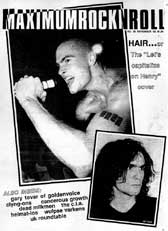Zine
A zine - derived from magazine - is an independently- or self-published booklet, often created by a single person. Zines are customarily created by physically cutting and gluing text and images together onto a master flat for photocopying, but it is also common to produce the master by typing and formatting pages on a computer. The end product is usually folded and stapled. Zines can be printed and bound in any manner. Offset printing is a relatively common alternative to photocopying, though there is some controversy among zine writers as to whether professionally printed products may be defined as zines.
History
Pamphleteers such as Martin Luther and Thomas Paine can be technically classified as zine publishers. However, the origin of the term "fanzine" (eventually shortened to "'zine" or simply "zine") is generally traced to small-circulation science fiction fandom publications beginning in the late 1920s, and continuing until the present, in which sci-fi fans wrote about themselves and their interests for a close-knit readership.
The rise of the punk subculture in the '70s spawned a new interest in self-publishing. Zines were used to promote a music scene that, with a few exceptions, received little attention from the larger music press. In 1975 the first known fanzine was published by Legs McNeil and friends in New York, it was called Punk. 'Punk' covered the happenings in the New York music and arts scene. The name of the zine; Punk was soon attributed to that scene. In 1976 the second most recognizable punk zine Sniffin' Glue was published in the UK by Mark Perry. The long-running newsprint zine Maximum Rock & Roll is arguably the most influential punk zine of all time.
Zines played a key role in the development and organization of the Queercore and Riot Grrrl movements of the late 1980's and 1990s. In 1985, J.D.s zine was released, which instigated the queercore scene and others, such as Homocore, Holy Titclamps, Outpunk and Chainsaw followed in its wake, leading to a wide-spread musical movement still in existence. Likewise, members of the prominent Riot Grrrl bands Bratmobile and Bikini Kill all began by published zines such as Jigsaw, Girl Germs, riot grrrl and Bikini Kill. Both these movements are important in the history of self-publishing because it was the zines themselves that precipitated and inspired the musical movements that they gave rise to.
From the mid-1980s through the late '90s, the review publication Factsheet Five (founded by Mike Gunderloy) formed a wide network of zine publishers and consumers (often the same people), encompassing a variety of interests and aesthetics. With this broad, centralized coverage, zines garnered brief mainstream attention in the mid-'90s; on the strength of their zines, self-publishers such as Jim Goad (ANSWER Me!), Lisa Carver (Rollerderby), Jim Hogshire (Pills a Go-Go), Jeff Koyen (Crank), Sean Tejaratchi (Craphound) and Pagan Kennedy (Pagan's Head) achieved moderate professional success. By 1998, R. Seth Friedman, then editor of Factsheet Five, announced his intention to sell it. It has since disappeared, although its new owners occasionally promise to revive it.
Currently, Zine World: A Reader's Guide to the Underground Press (created by Doug Holland in the '90s as a more opinionated alternative to Factsheet Five) serves a similar function, but on a much smaller scale. Zine Guide and Amusing Yourself To Death were also notable Factsheet Five alternatives, but both have ceased publication.
The Usenet group alt.zines still serves as a network of zine publishers, although activity there has declined significantly in recent years. In the 1990s, younger publishers often communicated with each other through online message boards, or through networks such as LiveJournal or MySpace.
Many believe that the widescale adoption of web browsers (circa 1996) ended the most abundant age of zines. However, they remain popular, particularly among those who also celebrate other hallmarks of the "Do It Yourself" (DIY) philosophy.
Distribution
Zines are often sold for varying but affordable prices and can also be distributed by trade
Preservation
Zines are a ephemeric medium, which means most don't have ISSNs or ISBNs. A few zine libraries now exist in coffee house basements, bookstore storage rooms and college campuses all over the world, and a number of universities and public libraries have growing zine collections. A zine library accepts donations from zinesters and others, catalogs these zines and will usually allow their collection to be browsed or borrowed from.
Types of Zines
- Category:24 Hour Zine
- Category:Art Zines
- Category:Audio Zine
- Category:Bike Zines
- Category:Comic Zine
- Category:Compzine
- Category:Craft Zines
- Category:Culinary Zines
- Category:Fanzines
- Category:Film Zines
- Category:Health Zine
- Category:Horror Zines
- Category:Literary Zines
- Category:Mental Health Zines
- Category:Minizine
- Category:One Shot Zines
- Category:POC Zine
- Category:Perzine
- Category:Photography Zine
- Category:Poetry Zines
- Category:Prisoners' Zines
- Category:Reference Zine
- Category:Review zines
- Category:Science Fiction Zines
- Category:Split Zine
- Category:Travel Zines
- Category:Webzine
